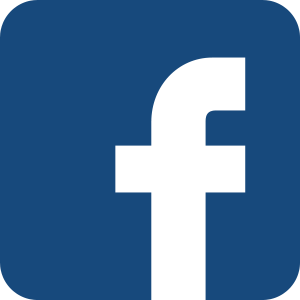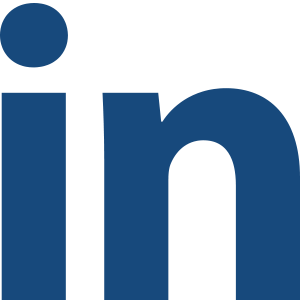Independently supported, non-religious schools educate just one percent of American schoolchildren. They number no more than 1,400 institutions, compared with some 110,000 public schools. They boast an array of benefits, among them small size, low student/teacher ratios, tough but sympathetic teaching by faculty that are masters of their fields, a lack of bureaucracy, a sense of community, and an emphasis on ethical and moral values. Seeing these benefits clearly is important because independent education is also expensive, though no more so than public education where the costs, to the consumer, are spread. In independent schools, they are highly focused. Ask any parent.
By the very nature of their “independence,” no two independent schools are identical. Yet all rise or fall on the answer to an old question: what is the place of independent education in a democratic society that educates the vast majority of its children in other kinds of schools? Given independent education’s tiny “lift capacity,” why should we care about the answer?
Public context
We can understand the vital role that independent schools play only in relation to the massive edifice of the public schools. Before the nineteenth century, American children received their schooling, such as it was, from local charity and church schools, private academies and, for the wealthiest, private tutors. Public schools and public school systems—open to all and financed from the public purse—were products of powerful converging forces in the mid-nineteenth century: Jacksonian democracy, the second industrial revolution, rapid urbanization and mass immigration. Like any mass movement, the rise of American public education was filled with compromise and conflict, conviction and expediency. Over time, local governments learned to navigate competing interests, educational theories, and claims of secular and religious constituencies. By the early twentieth century, they had created the thousands of local “systems” that we have come to know as “public schools.”
The public schools became an undeniable success story, one that transcended class, ethnic, regional and eventually even racial lines. Everyone partook together—the poor, the middle class, even some of the rich, native and newcomer alike—and everyone was remarkably wellserved. From the beginning, then, the public schools could claim one seemingly unassailable, non-academic virtue: they were the mixing bowls of democracy. Accommodating changing styles of pedagogy with ease, they worked equally well as childhood crucibles for the “melting pot” in the early twentieth century and as engineered environments for “diversity” at the start of the twenty-first.
Private anxiety
This assumption—that egalitarian social mixing under the auspices of the public schools was an essential preparation for life in a democracy—became a problem for the non-public, nonreligious alternatives as the relationship between public and private schools changed in the 1960s and ’70s. The words did not help. Since the rise of the public system, schools that did not receive public financing had been known as “private schools.” “Private” did not mean “closed,” of course, for admission to private schools typically was open to all, though obviously not all could be accommodated. The College Board first used the phrase “independent school” in 1938, to distinguish private, non-sectarian schools from religious ones. This distinction became increasingly important in the context of the civil rights movement and the social turmoil that followed, as independent schools took care to distance themselves from the Christian academy phenomenon and the taint of “white-flight” from faltering public schools.
This new era presented challenges as well as opportunities. Independent schools benefited (sometimes with embarrassment) from the distress of public schools, as families migrated away from the beleaguered public sector. But frustration with the public schools also raised the expectations placed upon independent ones. The resources needed to meet them, coupled with continued tiny enrollment capacity of independent schools, led to higher prices. Families clamoring to get in also meant that independent schools could be more selective. As prices and standards rose, so did charges of elitism.
In the more distant past, many independent schools, particularly boarding schools in New England and the South, were indeed bastions of privilege, filled with legacy admissions and catering to the children of established and aspiring elites who could afford to pay. Private dayschools tended to be more varied in their composition and attitudes. Though some were elitist, many were staunchly middle class, filled with the offspring of the managerial and professional classes at a time when those classes still commanded only modest incomes. Curricular offerings< centered on academic learning, usually classical in nature but in some cases progressive too. Faculty were loyal and inexpensive. Physical plant was far from palatial and often inferior to that of the public schools. Filling spaces could be a challenge, particularly in large cities with attractive public systems. Tuitions necessarily stayed low. Independent schools of that era operated rather in parallel with than as alternatives to the public systems.
Independent answers
It is the central irony of their more recent history that all independent schools found themselves branded “elite” when it was the mounting problems of public systems that fueled the growing demand for a privately-purveyed but open-to-the-public education. This occurred, moreover, at the very moment when elitism in any form came under fierce attack, encouraging independent schools to dissociate themselves from any vestige of it.
By the 1980s, bouts of introspection, unimaginable in earlier days, became part of independent school routine. Administrators and faculty tied themselves in knots over the wording of mission statements as elaborate as any corporation’s and sometimes more breathtaking in scope. Fighting back against the perception of elitism, “private” schools recast themselves as “independent:” not only to separate them from religious institutions, but also to signify institutions whose independence allowed them to offer something dramatically different from and superior to what the public schools could offer.
As independent schools looked within, they also projected outward, trying to justify their worth to society as a whole. Many did so by mimicking the public schools, especially in multicultural education, which sought to bridge the gap between schools and society and so, it was believed,< make schools more useful. While their zeal for diversity may have been compensation for their perceived laggardness in racial integration a decade or two before, it seemed like a good fit. Public schools might put different groups under one roof (where they sometimes resegregated), but private schools, which were smaller and emphasized the ideal of community, stood a better chance of instilling in students an understanding of people of different backgrounds and thus prepare them for the increasingly diverse society of which they were destined to be members, even leaders. Such professions of public responsibility became de rigeur. In fact, it was hard to find an independent school that did not require long hours of “community service,” along with long hours in lab and library, to back it up.
Back to the future
However earnest, this assertion of public responsibility expressed through such non-academic preoccupations obscured a more fundamental issue with deeper roots. For a century at least Americans have argued over education. What are schools for? Who gets schooled? What must they learn? Was it not in the context of this long, hard debate that independent schools might persuade others of their public role as beacons amid a sea of less fortunate schools? Many believed so. For also embedded in their mission statements, alongside declarations of their commitment to diversity, could be found another, more historically-convincing justification for independent schools: the commitment to high academic standards and the belief that schools were above all intended for teaching and learning the skills of the mind.
The consensus around this principle, once widely shared, is now deeply eroded. The answers to two questions ought to confirm the mission of independent schools in restoring it. If it is true that children should be taught not just how to learn but what knowledge has the highest value, and if the main problem of public education is the dilution of this academic mission in the face of competition from social and cultural mandates, then the anxiety of independent schools about meeting their public responsibility can be laid to rest. Almost all independent schools agree that the central purpose of education is to render knowledge coherent and to teach students how to transform that knowledge into understanding of the world around them. Nor, history instructs us, is this purpose foreign to the public schools, however dormant in the recent past it may have become. To reaffirm this mission is to reaffirm the place of independent education in even the most diverse democratic society. Knowledge of the past is critical, for we cannot know the future, yet must have something to stand against the present. To awaken memory is to take the first step down the right path ahead. If independent schools can do this, then future history will record how private education came to serve an urgent public purpose, independently.
© Copyright 2012 The Winthrop Group, Inc. All Rights Reserved.


